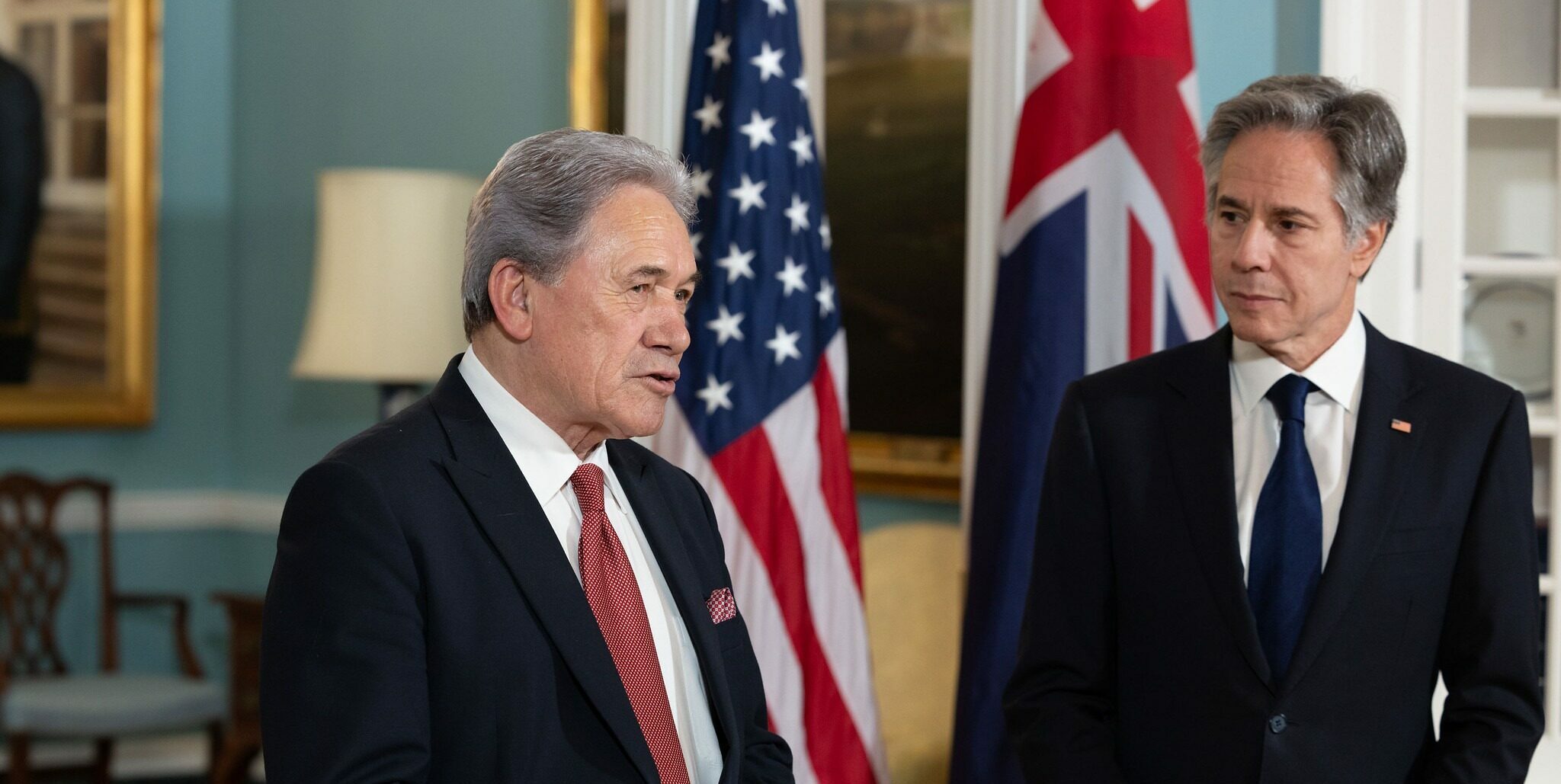Should New Zealand Join AUKUS Pillar II?
Should New Zealand join AUKUS Pillar II? According to Aotearoa New Zealand’s Foreign Minister, Winston Peters, this question is moot, as the country has not received an invitation to join Pillar II, the technology-sharing mechanism of the Australia, United Kingdom, and United States (AUKUS) security partnership. However, he acknowledged that the government is in discussions to learn more about what membership would entail and is considering whether joining would be in New Zealand’s national security interest. Should New Zealand signal a willingness to join, a formal invitation would undoubtedly be forthcoming.
As officials continue to examine the implications of Pillar II membership, the political debate within New Zealand’s foreign policy circles is vociferous and growing, but also divided, on the perceived benefits and risks of joining the arrangement.
What would joining Pillar II mean for New Zealand?
While New Zealand has long relied on its geographic isolation to deter traditional military threats, physical distance offers no protection from emerging digital threats. The Foreign Minister has indicated that New Zealand’s strategic threat environment warrants a thorough consideration of the merits of Pillar II membership, arguing that opponents may not fully appreciate the country’s intelligence service assessments shaping this debate, even as he remains undecided on whether the country should join. A recent publicly available intelligence report raises concerns about foreign interference and espionage threats, including recent instances involving China, emphasising the need to seriously consider the technological gains that New Zealand could accrue under Pillar II to strengthen its electronic intelligence and counter-espionage capabilities – technologies that New Zealand could not realistically develop indigenously.
Local proponents of Pillar II highlight that, on a practical level, membership would enable the country to access a range of advanced technologies, such as artificial intelligence (AI), quantum computing, cyber, undersea capabilities, hypersonic weaponry, information-sharing, and electronic warfare – though it may choose not to acquire the full suite of options.
The argument goes that adopting the relevant advanced technologies available through Pillar II would enable New Zealand to maintain its interoperability in areas such as communications and domain awareness with its military cooperation partners. Conversely, failing to stay up-to-date with their systems could impede New Zealand’s ability to coordinate with these partners on a range of important tasks, including its growing role in emergency and disaster response, and may result in its marginalisation from such arrangements.
For example, New Zealand, along with the three AUKUS states and Canada, is part of the Five Eyes intelligence-sharing alliance and has recently joined the Operation Olympic Defender initiative on space-related cooperation, both of which are likely to utilise the technology envisioned in Pillar II. This close cooperation among these states also extends to the NATO Indo-Pacific Partnership grouping of Australia, New Zealand, Japan, and South Korea. Notably, Canada, Japan, and South Korea are similarly considering joining AUKUS Pillar II.
A sticking point for opponents is the extent to which Pillar II’s advances in offensive military technology, and even greater alignment with New Zealand’s traditional allies’ AUKUS commitment to a ‘free and open Indo-Pacific,’ are perceived as weakening New Zealand’s foreign policy independence. These moves are also viewed as provocative by China and as efforts to constrain China’s expanding influence in the region. Indeed, Chinese Premier Li Qiang likely conveyed as much to New Zealand officials during his Wellington visit in June.
It has also been noted that New Zealand’s growing entanglement in these various initiatives may come at the expense of its enduring commitments to Pacific Island partners, serving as an unwelcome distraction from their actual and shared existential threat–climate change–against which more resources are desperately required. Careful diplomacy will be required to address Pacific partners’ concerns about an expansion of AUKUS interests in the sub-region, particularly beyond Australia’s acquisition of nuclear-powered, but conventionally-armed, submarines, which has already strained neighbourly relations.
As a small country dependent on trade, New Zealand is also sensitive to the risk of upsetting its largest trading partner, China, with whom it has maintained a Comprehensive Strategic Partnership for ten years. The financial costs of developing and purchasing these new Pillar II technologies, and of the potential damage that joining Pillar II may inflict on New Zealand’s most important bilateral trade relationship, have yet to be transparently quantified or debated.
More public debate is certainly needed on all these considerations before the New Zealand Government makes a decision on whether to signal its readiness to join AUKUS Pillar II.
About the Author
Angela Woodward is the Deputy Executive Director of the Verification Research, Training and Information Centre (VERTIC) and a member of the International Advisory Board of the Asia-Pacific Leadership Network (APLN).
Disclaimer: The opinions articulated above represent the views of the author(s) and do not necessarily reflect the position of the Asia-Pacific Leadership Network or any of its members. APLN’s website is a source of authoritative research and analysis and serves as a platform for debate and discussion among our senior network members, experts, and practitioners, as well as the next generation of policymakers, analysts, and advocates. Comments and responses can be emailed to apln@apln.network.
Image: New Zealand Foreign Minister Winston Peters and US Secretary of State Antony Blinken, Washington D.C., 11 April 2024 (US State Department photo by Chuck Kennedy, Flickr)
This article was published in The Korea Times on 11 September 2024. You can find the original article here.

